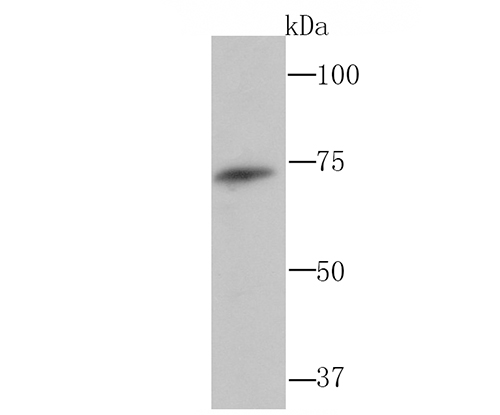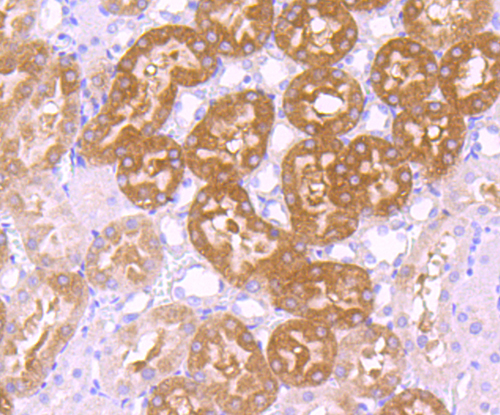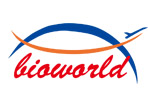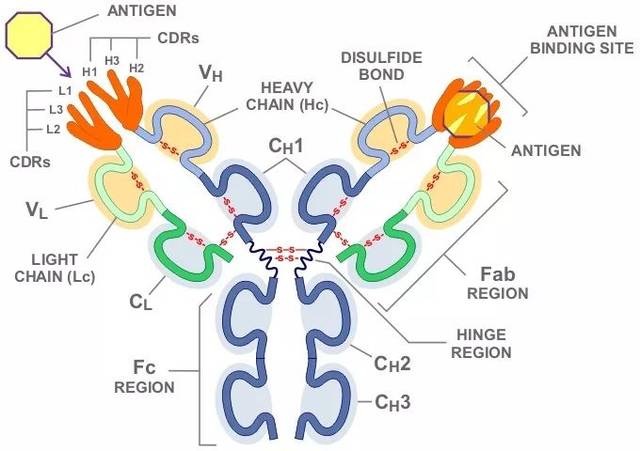Product Name :
GCLC polyclonal antibody Background :
The GCLC gene consists of 16 exons and encodes the 636 amino acid protein g-GCSc (g-glutamylcysteine synthetase heavy subunit), also designated g-L-glutamate-L-cysteine ligase catalytic subunit (GLCLC). g-GCSc is expressed in hemocytes, brain, liver and kidney. g-GCSc associates with a regulatory or modifier subunit, g-GCSm (g-glutamylcysteine synthetase light subunit), to form a heterodimer, g-GCS. g-GCS is the first enzyme involved and the rate determining step in glutathione biosynthesis. Oxidants, cadium and methyl mercury upregulate the transcription of g-GCS. H2O2 regulation depends on the Yap1 protein and the presence of glutamate, glutamine and lysine. Cadium regulates transcription through proteins Met-4, Met-31 and Met-32. Cbf1, a DNA binding protein, inhibits transcription of g-GCS. Chemopreventive compounds cause increased levels of g-GCSc in kidney tissues, which may protect against chemically induced carcinogenesis. A His370Leu amino acid change in g-GCSc causes deficiencies in activity which are responsible for hemolytic anemia and low red blood cell glutathione levels. Product :
Rabbit IgG, 1mg/ml in PBS with 0.02% sodium azide, 50% glycerol, pH7.2 Storage&Stability :
Store at +4°C after thawing. Aliquot store at -20°C or -80°C. Avoid repeated freeze / thaw cycles. Specificity :
GCLC polyclonal antibody detects endogenous levels of GCLC protein. Immunogen :
Recombinant protein Conjugate :
Unconjugated Modification :
Unmodification
GCLC polyclonal antibody Background :
The GCLC gene consists of 16 exons and encodes the 636 amino acid protein g-GCSc (g-glutamylcysteine synthetase heavy subunit), also designated g-L-glutamate-L-cysteine ligase catalytic subunit (GLCLC). g-GCSc is expressed in hemocytes, brain, liver and kidney. g-GCSc associates with a regulatory or modifier subunit, g-GCSm (g-glutamylcysteine synthetase light subunit), to form a heterodimer, g-GCS. g-GCS is the first enzyme involved and the rate determining step in glutathione biosynthesis. Oxidants, cadium and methyl mercury upregulate the transcription of g-GCS. H2O2 regulation depends on the Yap1 protein and the presence of glutamate, glutamine and lysine. Cadium regulates transcription through proteins Met-4, Met-31 and Met-32. Cbf1, a DNA binding protein, inhibits transcription of g-GCS. Chemopreventive compounds cause increased levels of g-GCSc in kidney tissues, which may protect against chemically induced carcinogenesis. A His370Leu amino acid change in g-GCSc causes deficiencies in activity which are responsible for hemolytic anemia and low red blood cell glutathione levels. Product :
Rabbit IgG, 1mg/ml in PBS with 0.02% sodium azide, 50% glycerol, pH7.2 Storage&Stability :
Store at +4°C after thawing. Aliquot store at -20°C or -80°C. Avoid repeated freeze / thaw cycles. Specificity :
GCLC polyclonal antibody detects endogenous levels of GCLC protein. Immunogen :
Recombinant protein Conjugate :
Unconjugated Modification :
Unmodification
-
 Western blot analysis of GCLC on A431 cell using anti-GCLC antibody at 1/1,000 dilution.
Western blot analysis of GCLC on A431 cell using anti-GCLC antibody at 1/1,000 dilution. -
 Immunohistochemical analysis of paraffin-embedded rat kidney tissue using anti-GCLC antibody. Counter stained with hematoxylin.
Immunohistochemical analysis of paraffin-embedded rat kidney tissue using anti-GCLC antibody. Counter stained with hematoxylin.
Reduction of DNA damage induced by titanium dioxide nanoparticles through Nrf2 in vitro and in vivo
PMCID: Pubmed No.:26091733
Tannic acid attenuates hepatic oxidative stress, apoptosis and inflammation by activating the Keap1‑Nrf2/ARE signaling pathway in arsenic trioxide‑toxicated rats
PMCID: Pubmed No.:33000240
Ameliorative effects and mechanisms of salvianic acid A on retinal iron overload in vivo and in vitro
PMCID: Pubmed No.:34058232
Bioworld Biotech only provide peptides for our antibodies and do not provide additional peptide customization services.
Price/Size :
USD 368/1mg/vial
Tips:
For phospho antibody, we provide phospho peptide(0.5mg) and non-phospho peptide(0.5mg).Describe :
Blocking peptides are peptides that bind specifically to the target antibody and block antibody binding. These peptide usually contains the epitope recognized by the antibody. Antibodies bound to the blocking peptide no longer bind to the epitope on the target protein. This mechanism is useful when non-specific binding is an issue, for example, in Western blotting (WB) and Immunohistochemistry (IHC). By comparing the staining from the blocked antibody versus the antibody alone, one can see which staining is specific; Specific binding will be absent from the western blot or IHC performed with the neutralized antibody.Formula:
Synthetic peptide was lyophilized with 100% acetonitrile and is supplied as a powder. Reconstitute with 0.1 ml DI water for a final concentration of 10 mg/ml.The purity is >90%,tested by HPLC and MS.
Storage:
The freeze-dried powder is more stable. For short time at 2-8°C. For long term storage store at -20°C.
Note :
This product is for research use only (RUO only). Not for use in diagnostic or therapeutic procedures.
 GCLC polyclonal antibody
GCLC polyclonal antibody  Datasheet
Datasheet COA
COA MSDS
MSDS SHIP
SHIP